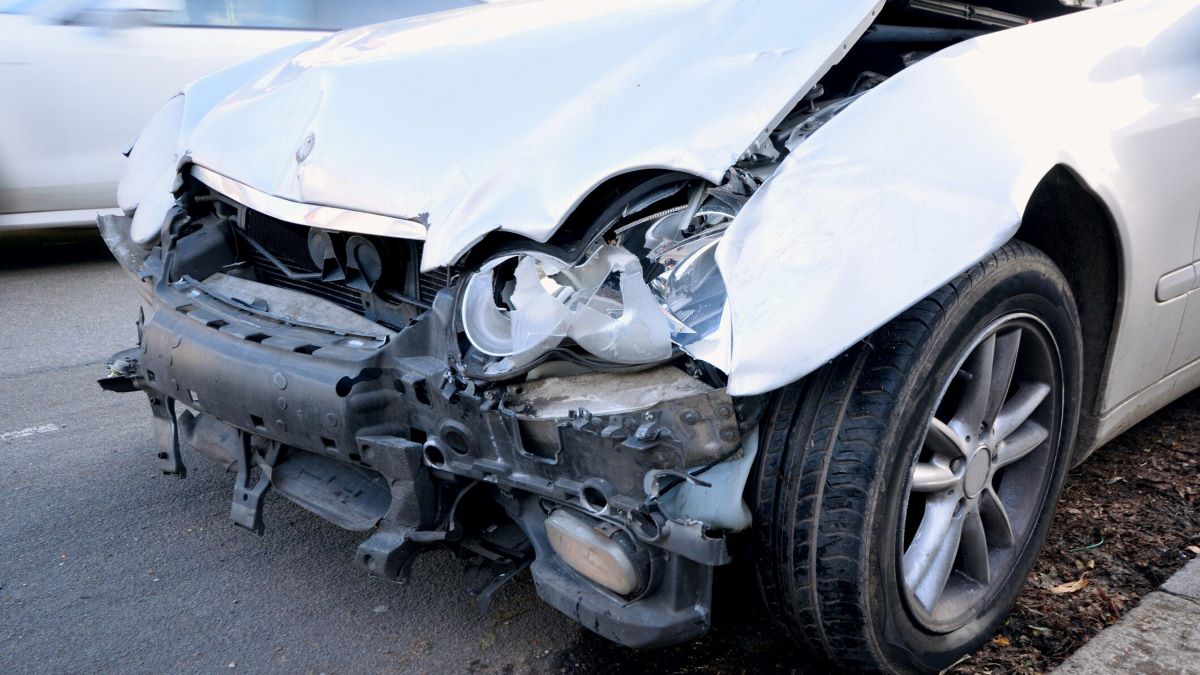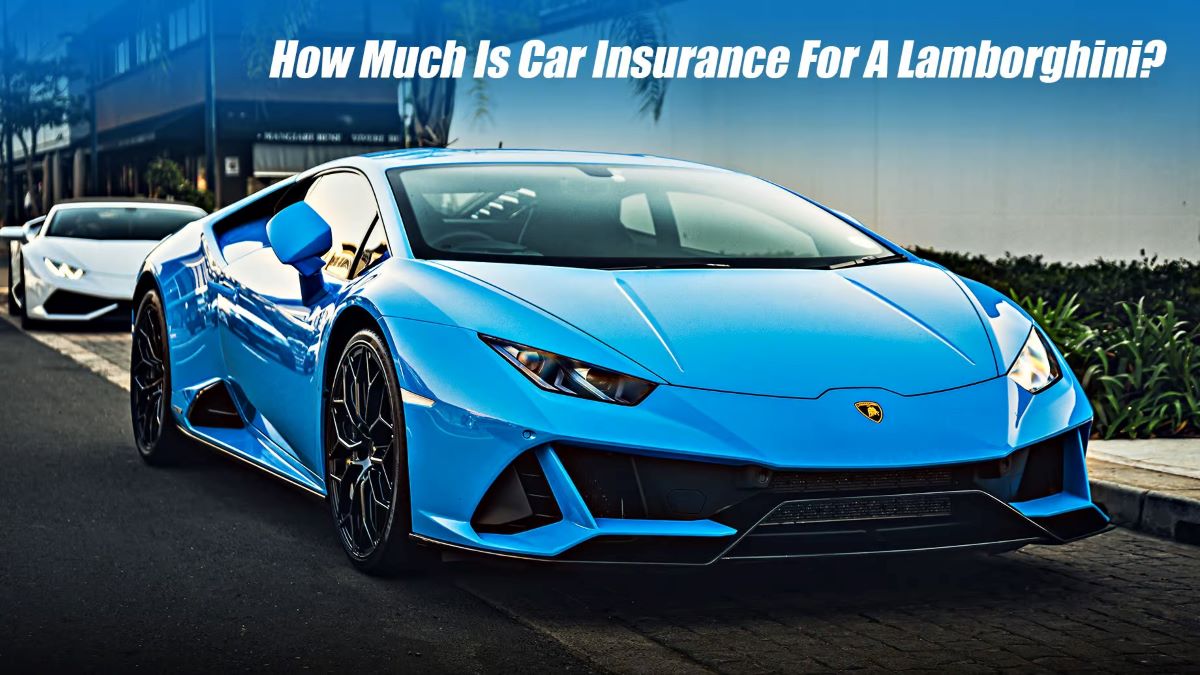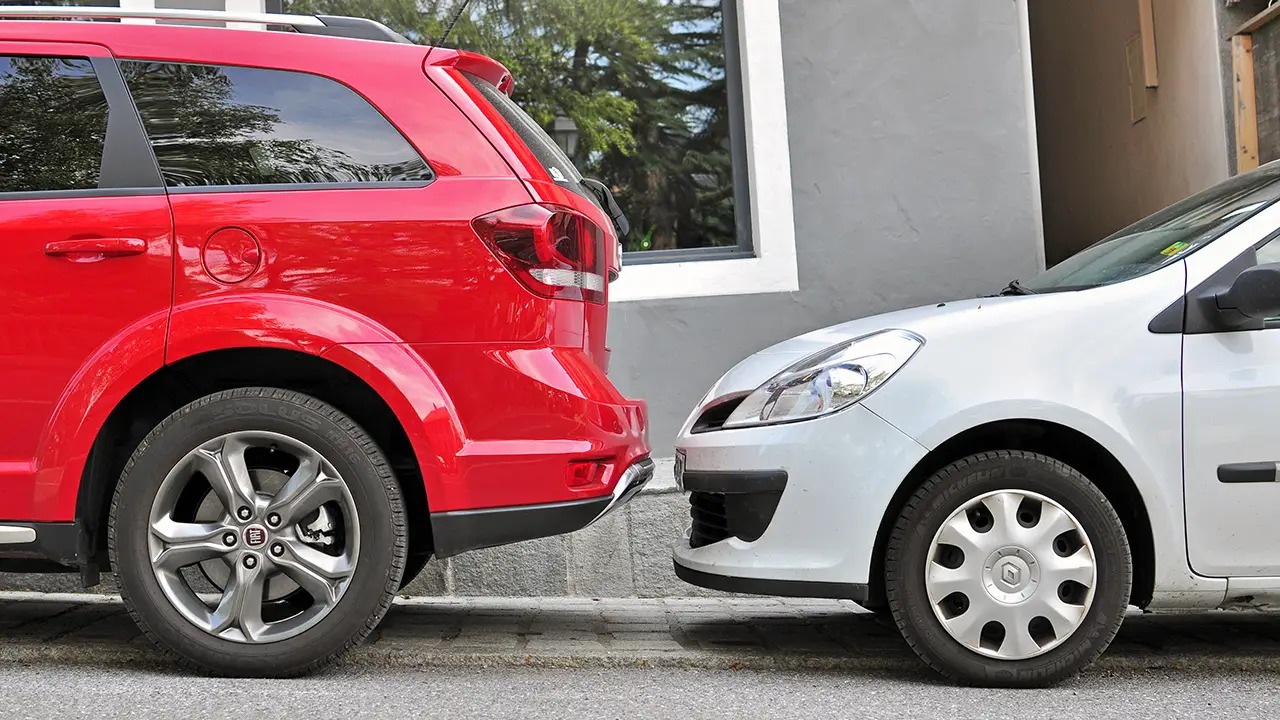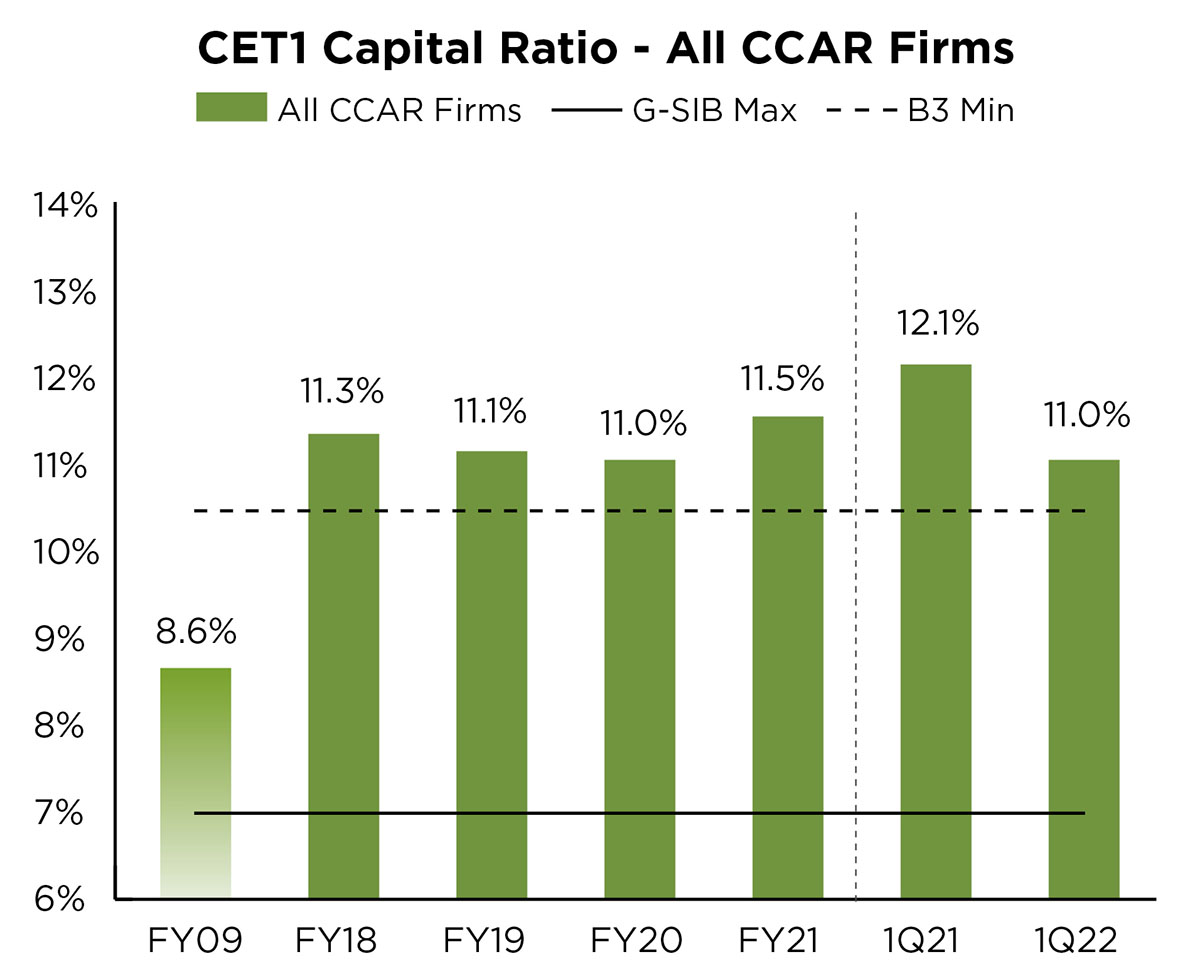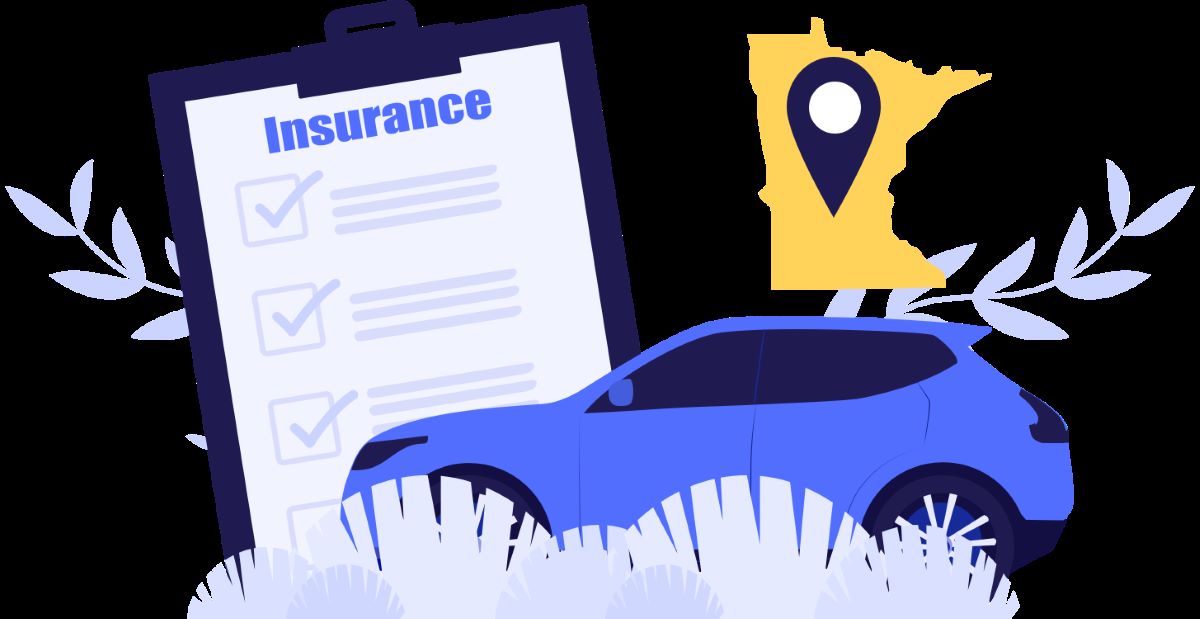

Finance
How Much Is Car Insurance In Minnesota?
Published: November 16, 2023
Looking for car insurance rates in Minnesota? Find out the cost of car insurance in Minnesota and get the best finance options for your needs.
(Many of the links in this article redirect to a specific reviewed product. Your purchase of these products through affiliate links helps to generate commission for LiveWell, at no extra cost. Learn more)
Table of Contents
- Factors Affecting Car Insurance Rates in Minnesota
- Minimum Car Insurance Requirements in Minnesota
- Average Cost of Car Insurance in Minnesota
- Cheapest Car Insurance Companies in Minnesota
- Tips for Saving Money on Car Insurance in Minnesota
- Important Car Insurance Laws and Regulations in Minnesota
- High-Risk Auto Insurance in Minnesota
- Car Insurance Discounts in Minnesota
- Frequently Asked Questions about Car Insurance in Minnesota
Factors Affecting Car Insurance Rates in Minnesota
When determining car insurance rates in Minnesota, several factors come into play. Understanding these factors can help you make informed decisions and potentially save money on your premiums. Here are some key factors that insurance companies consider:
- Age and Gender: Young and inexperienced drivers generally have higher insurance rates. Additionally, statistics show that young male drivers are more likely to be involved in accidents, resulting in higher premiums for this demographic.
- Driving Record: Your driving history plays a significant role in determining your insurance rates. If you have a clean record with no accidents or traffic violations, you can expect lower premiums. Conversely, a history of accidents or speeding tickets can increase your rates.
- Location: Your residential address can influence your car insurance rates in Minnesota. Urban areas typically have higher rates due to increased chances of accidents and theft.
- Vehicle Type and Usage: The make, model, and age of your vehicle, along with its usage, impact insurance rates. Newer or expensive cars typically require higher coverage, while vehicles used for business purposes may have higher premiums due to increased mileage and exposure to risk.
- Credit Score: In Minnesota, insurers can use credit scores as a factor in determining rates. Generally, individuals with higher credit scores are considered less risky and may enjoy lower premiums.
- Deductible: Choosing a higher deductible can lower your premiums. However, it’s important to ensure that you can afford to pay the deductible should an accident occur.
- Insurance Coverage and Limits: The level of coverage and limits you choose will affect your premium. Opting for higher coverage levels can increase your rates but also provide more protection in case of accidents or damages.
- Marital Status: Married individuals may be eligible for lower rates, as studies show that married drivers tend to have fewer accidents than their single counterparts.
- Claims History: Your claims history can impact your rates. If you have a history of multiple claims, insurance companies may view you as a higher risk and charge higher premiums.
- Discounts: Taking advantage of available discounts, such as safe driver discounts or bundling your car insurance with other policies, can help reduce your overall premium.
Keep in mind that each insurance company may weigh these factors differently, so it’s always a good idea to compare quotes from multiple providers to ensure you’re getting the best possible rate. By understanding the factors influencing car insurance rates in Minnesota, you can make informed decisions and potentially save money while ensuring you have adequate coverage.
Minimum Car Insurance Requirements in Minnesota
In Minnesota, it is mandatory for all drivers to carry a minimum level of car insurance coverage. These minimum requirements are in place to ensure that drivers have the financial means to cover any damages or injuries they may cause in an accident. Here are the minimum car insurance requirements in Minnesota:
- Liability Coverage: Drivers in Minnesota are required to have liability coverage, which includes both bodily injury and property damage liability. The minimum limits are:
- $30,000 bodily injury liability per person
- $60,000 bodily injury liability per accident
- $10,000 property damage liability per accident
- Personal Injury Protection (PIP) Coverage: Minnesota also requires drivers to carry Personal Injury Protection (PIP) coverage. This coverage provides medical expense coverage for you and your passengers, regardless of who is at fault in an accident. The minimum PIP coverage requirement is $40,000 per person per accident.
- Uninsured/Underinsured Motorist Coverage: Motorists in Minnesota are also required to carry uninsured and underinsured motorist coverage. This coverage protects you if you are in an accident with a driver who does not have insurance, or whose insurance coverage is insufficient to cover your damages. The minimum limits for uninsured/underinsured motorist coverage in Minnesota are:
- $25,000 bodily injury per person
- $50,000 bodily injury per accident
This coverage pays for injuries or damages to other parties involved in an accident that you are legally liable for.
This coverage ensures that you are protected even if the other driver is not adequately insured.
While these are the minimum requirements in Minnesota, it’s important to consider that they may not provide sufficient coverage in certain situations. It’s recommended to evaluate your personal circumstances and consider additional coverage options to adequately protect yourself and your assets.
It’s also worth noting that failure to carry the minimum required insurance in Minnesota can result in severe penalties, including fines, license suspension, and even imprisonment. It is crucial to meet these requirements to comply with the law and ensure financial protection in the event of an accident.
Average Cost of Car Insurance in Minnesota
If you’re a driver in Minnesota, it’s essential to understand the average cost of car insurance in the state. The cost of car insurance can vary based on several factors, including your age, driving record, location, and the coverage options you choose.
According to the Insurance Information Institute (III), the average annual cost of car insurance in Minnesota is around $1,260. This places Minnesota slightly below the national average of around $1,480 per year.
Several factors contribute to the cost of car insurance in Minnesota. For example:
- Location: The location where you reside and park your car can influence your insurance rates. Urban areas tend to have higher rates due to increased traffic, higher risk of accidents, and higher instances of auto theft.
- Driving Record: Your driving record plays a significant role in determining your insurance premium. If you have a clean driving history with no accidents or traffic violations, you are likely to enjoy lower rates compared to those with a history of accidents or speeding tickets.
- Age and Gender: Younger and less experienced drivers, particularly males, generally have higher insurance rates compared to older, more experienced drivers.
- Vehicle Type: The make, model, and age of your vehicle can impact insurance rates. More expensive or high-performance vehicles tend to have higher insurance costs.
- Credit Score: In Minnesota, insurers can also consider your credit score when determining your rates. Individuals with higher credit scores may be eligible for lower premiums.
- Deductibles and Coverage Limits: The deductible and coverage limits you choose for your policy will also impact the cost of your insurance. Higher deductibles and lower coverage limits generally result in lower premiums, but this means that you will have to assume more financial responsibility in the event of an accident.
While these factors can give you a rough idea of the average cost of car insurance in Minnesota, it’s important to remember that every individual’s situation is unique. The best way to get an accurate estimate of your car insurance costs is to obtain quotes from several insurance providers.
It’s also worth mentioning that there are several ways to potentially lower your car insurance premiums. These include maintaining a clean driving record, taking advantage of available discounts, bundling policies, and selecting higher deductibles that you can comfortably afford.
Understanding the average cost of car insurance in Minnesota and the factors that influence it can help you make informed decisions and find the right coverage that fits your budget and provides adequate protection for your needs.
Cheapest Car Insurance Companies in Minnesota
When it comes to finding the cheapest car insurance in Minnesota, it’s important to shop around and compare quotes from different insurance providers. While the cost of car insurance can vary based on individual factors such as driving history, location, and the type of coverage you need, certain companies tend to offer more affordable rates in the state. Here are some of the cheapest car insurance companies in Minnesota:
- State Farm: State Farm is known for its competitive rates and extensive coverage options. They offer a range of discounts to help drivers save on their premiums, including safe driving discounts, multi-vehicle discounts, and good student discounts.
- Progressive: Progressive provides affordable car insurance policies with flexible coverage options. They offer various discounts, such as multi-policy, multi-car, and safe driver discounts, which can significantly reduce your premiums.
- GEICO: GEICO is known for its affordable rates and user-friendly online platform. They offer a wide range of coverage options and discounts, including safe driver discounts, military discounts, and multi-vehicle discounts.
- American Family: American Family offers competitive rates in Minnesota and provides various discounts to help policyholders save money. They also have a strong customer service reputation and offer customizable coverage options.
- Farmers: Farmers Insurance offers affordable car insurance policies in Minnesota. They have customizable coverage options, and policyholders can take advantage of various discounts, such as multi-policy, good student, and safe driver discounts.
Remember that the cheapest car insurance company for you may vary depending on your specific circumstances and coverage needs. It’s crucial to compare quotes from multiple providers to find the best and most affordable car insurance policy that meets your requirements.
In addition to comparing rates, it’s also important to consider the financial stability and customer service reputation of the insurance companies you are considering. You want to choose a company that is reliable and will provide excellent service when you need to file a claim.
Ultimately, finding cheap car insurance in Minnesota involves striking a balance between affordability and the coverage you need. By researching and comparing quotes from different insurance companies, you can find the best option for your budget without compromising on the quality of coverage.
Tips for Saving Money on Car Insurance in Minnesota
Paying for car insurance can sometimes feel like a significant expense, but there are several ways you can save money on your car insurance premiums in Minnesota. Here are some helpful tips to help you reduce your car insurance costs:
- Shop Around and Compare Quotes: Don’t settle for the first insurance company you come across. Take the time to research and compare quotes from multiple providers. Each company uses different rating factors, so comparing quotes can help you find the most affordable option for your specific circumstances.
- Opt for Higher Deductibles: Choosing a higher deductible means you’ll pay more out of pocket in the event of an accident, but it can significantly lower your monthly premiums. Assess your financial situation and choose a deductible that you can comfortably afford.
- Utilize Available Discounts: Insurance companies often offer a variety of discounts that can help reduce your premiums. Common discounts include safe driver discounts, good student discounts, multi-vehicle discounts, and bundling multiple policies with the same provider.
- Improve Your Credit Score: In Minnesota, insurers can use your credit score to determine your rates. Maintaining a good credit score can help lower your premiums, so make sure to pay your bills on time and keep an eye on your credit report.
- Consider Usage-Based Insurance: Some insurance companies offer usage-based insurance programs that track your driving habits. If you’re a safe driver and don’t drive frequently, this could result in lower premiums based on your actual driving behavior.
- Drive Safely and Maintain a Clean Record: Insurance companies reward safe drivers with lower premiums. Avoid accidents, traffic violations, and speeding tickets to keep your insurance rates low.
- Evaluate Your Coverage Needs: Assess your coverage needs regularly to ensure you’re not overpaying for coverage you don’t need. For example, if you have an older vehicle, you may consider dropping collision and comprehensive coverage if the cost outweighs the value of your car.
- Take Defensive Driving Courses: Completing an approved defensive driving course can sometimes qualify you for an insurance discount. Check with your insurance provider to see if they offer discounts for completing such courses.
- Maintain Continuous Coverage: Insurance companies often offer discounts for policyholders who maintain continuous coverage. Avoid lapses in coverage to take advantage of this potential discount.
Remember, it’s essential to strike the right balance between cost and coverage when looking to save money on car insurance. While cost-saving measures are important, ensure that you’re maintaining adequate coverage to protect yourself financially in case of an accident or other unforeseen circumstances.
By implementing these tips and exploring all available options, you can potentially reduce your car insurance costs and find an affordable policy that meets your coverage needs in Minnesota.
Important Car Insurance Laws and Regulations in Minnesota
When it comes to car insurance in Minnesota, it’s crucial to understand the laws and regulations that govern the state. Familiarizing yourself with these laws will help ensure that you comply with the requirements and protect yourself financially. Here are some important car insurance laws and regulations in Minnesota:
- Minimum Liability Coverage: Minnesota law mandates that all drivers carry a minimum level of liability insurance coverage. The minimum requirements include $30,000 bodily injury liability coverage per person, $60,000 bodily injury liability coverage per accident, and $10,000 property damage liability coverage per accident.
- No-Fault Insurance: Minnesota is a no-fault insurance state. This means that in the event of an accident, each driver’s insurance company covers their own medical expenses and damages, regardless of who is at fault. Personal Injury Protection (PIP) coverage is required in Minnesota to cover these costs.
- Uninsured/Underinsured Motorist Coverage: Minnesota law also requires drivers to carry uninsured and underinsured motorist coverage. This coverage protects you if you are in an accident with a driver who doesn’t have insurance or has insufficient coverage to pay for your damages.
- Proof of Insurance: Minnesota drivers are required to carry proof of insurance at all times. You must present this proof if you are involved in an accident, stopped by law enforcement, or if requested by the Department of Public Safety.
- Electronic Proof of Insurance: Minnesota allows drivers to show proof of insurance electronically. You can provide digital proof using your smartphone or other electronic devices, making it more convenient and accessible.
- Penalties for Non-Compliance: Failure to carry the minimum required insurance coverage in Minnesota can result in penalties, including fines, license suspension, and even imprisonment. It is essential to meet the required insurance obligations to comply with the law and protect yourself financially.
Understanding and complying with these car insurance laws and regulations in Minnesota is vital. It ensures that you have the necessary coverage to protect yourself and others in the event of an accident. It is also crucial to review your policy regularly to ensure that you remain in compliance with the laws and have adequate coverage based on your evolving needs.
It’s recommended to consult with an insurance professional or contact the Minnesota Department of Commerce to get more detailed information regarding the specific car insurance laws and regulations in the state.
High-Risk Auto Insurance in Minnesota
High-risk auto insurance is a type of coverage designed for drivers who are considered high-risk by insurance companies due to various factors such as a poor driving record or a history of accidents or traffic violations. If you find yourself in this category, it’s important to understand how high-risk auto insurance works in Minnesota.
In Minnesota, high-risk drivers may be required to seek coverage through the Minnesota Automobile Insurance Plan (MAIP). MAIP is a program established by the state to ensure that all drivers have access to insurance coverage, regardless of their driving history or level of risk.
Here are a few factors that may result in being classified as a high-risk driver:
- DUI/DWI Convictions: Drivers with DUI or DWI convictions are considered high-risk and may face significant increases in insurance premiums. These convictions signal to insurance companies that the driver poses a higher liability.
- Multiple At-Fault Accidents: A history of multiple at-fault accidents can also lead to being classified as a high-risk driver. Insurance companies view these accidents as indicators of an increased likelihood of future accidents.
- Multiple Traffic Violations: Drivers with a history of multiple traffic violations, such as speeding tickets or reckless driving, may be deemed high-risk. These violations suggest a tendency to disregard traffic laws or engage in unsafe driving behaviors.
- Lapse in Insurance Coverage: Allowing your car insurance coverage to lapse can result in being labeled as a high-risk driver. This is because insurance companies consider a lapse in coverage as an indication of financial instability or an increased likelihood of driving uninsured.
High-risk auto insurance typically comes with higher premiums due to the increased level of risk associated with insuring these drivers. However, it’s important to note that being classified as a high-risk driver doesn’t necessarily mean that you’re stuck with high premiums forever. As time passes without any further accidents or violations, your risk profile may improve, allowing you to qualify for lower rates in the future.
If you find yourself in the high-risk category, it’s essential to understand your options. Working with an insurance agent or broker who specializes in high-risk auto insurance can help you navigate the process and find coverage that meets your needs at the most affordable rates available.
Remember, while high-risk auto insurance may be more expensive, it’s essential to maintain the required coverage to drive legally in Minnesota. Failing to have insurance coverage can lead to severe penalties, including fines, license suspension, and legal consequences.
Car Insurance Discounts in Minnesota
Car insurance discounts can help you save money on your premiums while still maintaining the coverage you need. Many insurance companies in Minnesota offer a variety of discounts to policyholders. Understanding these discounts and how to qualify for them can significantly lower your car insurance costs. Here are some common car insurance discounts available in Minnesota:
- Safe Driver Discount: Insurance companies often reward safe drivers who have a clean driving record with lower premiums. If you have avoided accidents and traffic violations, you may qualify for a safe driver discount.
- Good Student Discount: Students who demonstrate academic excellence can often receive a good student discount. Maintaining a certain GPA or being on the honor roll can qualify you for this discount.
- Multi-Vehicle Discount: If you have multiple vehicles in your household insured under the same policy, you may be eligible for a multi-vehicle discount. Combining your vehicles onto one policy can result in lower premiums.
- Bundling Discount: Many insurance companies offer discounts if you bundle your car insurance policy with other policies, such as homeowners or renters insurance. Bundling policies can save you money on both premiums.
- Defensive Driving Course Discount: Completing an approved defensive driving course can qualify you for a discount. These courses provide valuable knowledge and skills that can lead to safer driving and lower insurance premiums.
- Anti-Theft Device Discount: If your car is equipped with an anti-theft device, such as an alarm or tracking system, you may be eligible for an anti-theft device discount. These devices help reduce the risk of theft or vandalism, resulting in lower premiums.
- Low Mileage Discount: If you drive your car less frequently or have a low annual mileage, you may qualify for a low mileage discount. Insurance companies consider lower mileage to be less of a risk for accidents and may offer this discount as a result.
- Pay-in-Full Discount: Some insurance companies provide a discount for policyholders who pay their premium in full upfront rather than in monthly installments. This can result in significant savings over the course of the policy term.
- Occupation or Affiliation Discounts: Certain professions or affiliations may make you eligible for discounts. This can include members of certain organizations, active or retired military personnel, or employees of specific companies.
Remember, eligibility for these discounts may vary depending on the insurance company and the specific terms and conditions. It’s recommended to inquire about available discounts when obtaining quotes from different insurance providers to ensure you’re maximizing your potential savings.
Keep in mind that combining multiple discounts can further reduce your premium. Work with an insurance agent or representative to determine which discounts you qualify for and how they can be applied to your policy.
By taking advantage of these car insurance discounts in Minnesota, you can effectively lower your premiums while enjoying the coverage and protection you need on the road.
Frequently Asked Questions about Car Insurance in Minnesota
Understanding car insurance can sometimes be overwhelming, especially with the intricacies of state-specific regulations. Here are answers to some frequently asked questions about car insurance in Minnesota:
- What are the minimum car insurance requirements in Minnesota?
In Minnesota, drivers are required to carry liability coverage with minimum limits of $30,000 bodily injury liability per person, $60,000 bodily injury liability per accident, and $10,000 property damage liability per accident. Personal Injury Protection (PIP) and uninsured/underinsured motorist coverage are also mandatory. - Is it necessary to carry uninsured/underinsured motorist coverage?
Yes, it is required in Minnesota. Uninsured/underinsured motorist coverage protects you if you are in an accident with a driver who doesn’t have insurance or has inadequate coverage. It ensures that you have coverage for your damages and expenses if the at-fault driver is unable to fully compensate you. - What factors affect car insurance rates in Minnesota?
Car insurance rates in Minnesota can be influenced by various factors including your age, driving record, location, vehicle type, credit score, deductible, insurance coverage and limits, marital status, claims history, and available discounts. - How can I save money on car insurance in Minnesota?
Some ways to save money on car insurance in Minnesota include shopping around and comparing quotes, opting for higher deductibles, utilizing available discounts, maintaining a clean driving record, improving your credit score, evaluating your coverage needs, and taking advantage of programs such as usage-based insurance. - What happens if I don’t have car insurance in Minnesota?
Driving without car insurance in Minnesota is illegal and can result in severe penalties, including fines, license suspension, and even imprisonment. Additionally, if you are involved in an accident while uninsured, you may be personally responsible for all damages and medical expenses incurred. - Can I show proof of insurance electronically in Minnesota?
Yes, Minnesota law allows drivers to show proof of insurance electronically. You can present digital proof using your smartphone or other electronic devices if requested by law enforcement or in other situations where proof of insurance is required. - What should I do if I’m labeled as a high-risk driver?
If you’re classified as a high-risk driver in Minnesota, you may need to seek coverage through the Minnesota Automobile Insurance Plan (MAIP). Working with an insurance agent or broker who specializes in high-risk auto insurance can help you navigate the process and find coverage that meets your needs at the most affordable rates available.
Remember, car insurance requirements and regulations can vary, so it’s always a good idea to consult with an insurance professional or the Minnesota Department of Commerce for personalized and up-to-date information regarding car insurance in the state.
